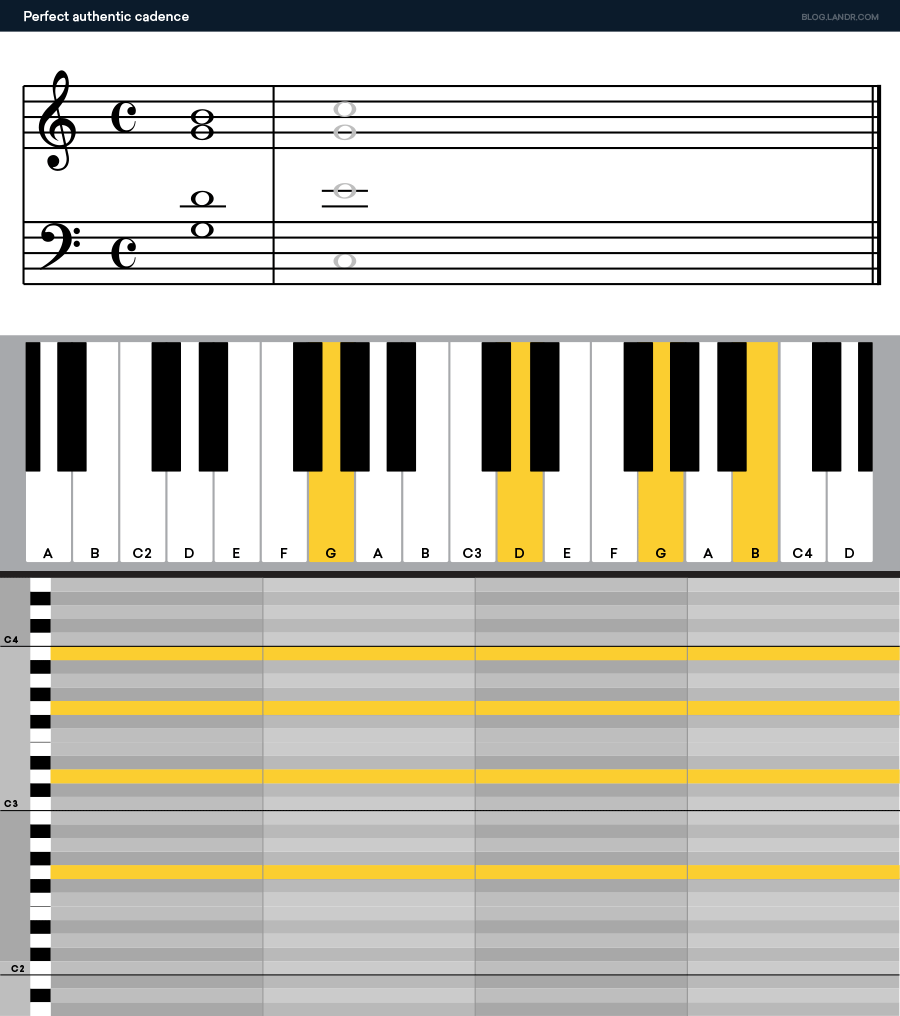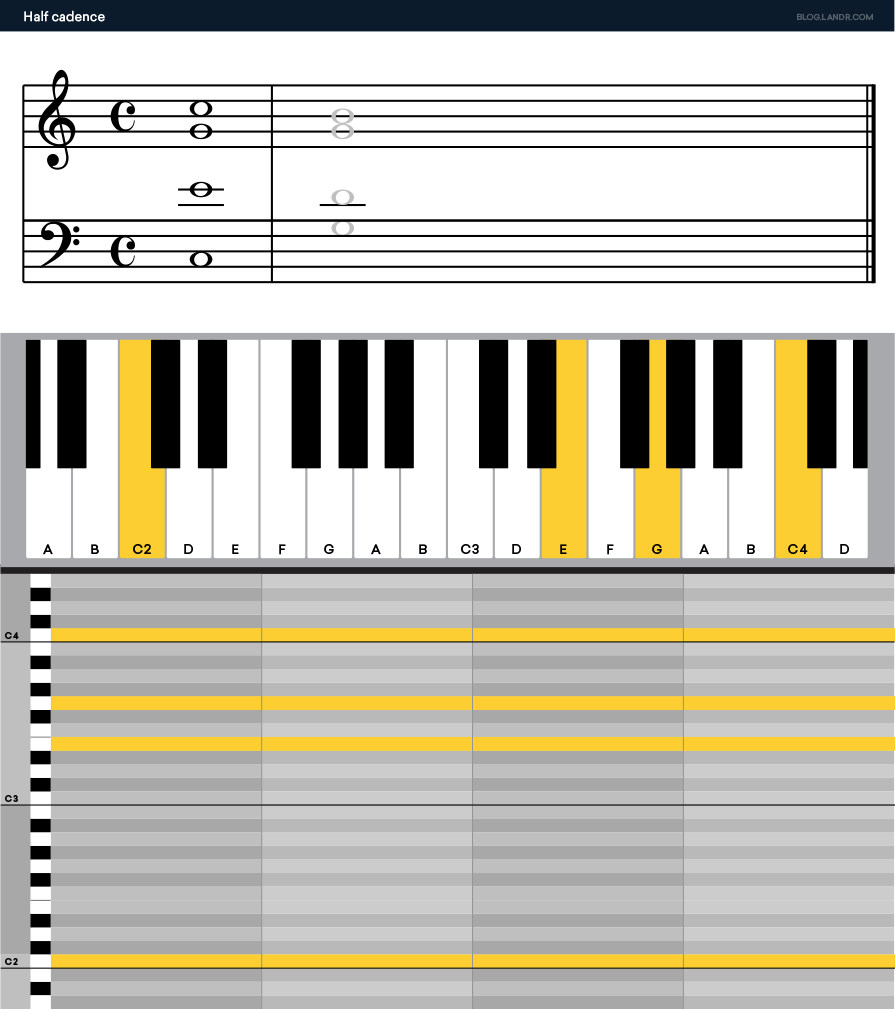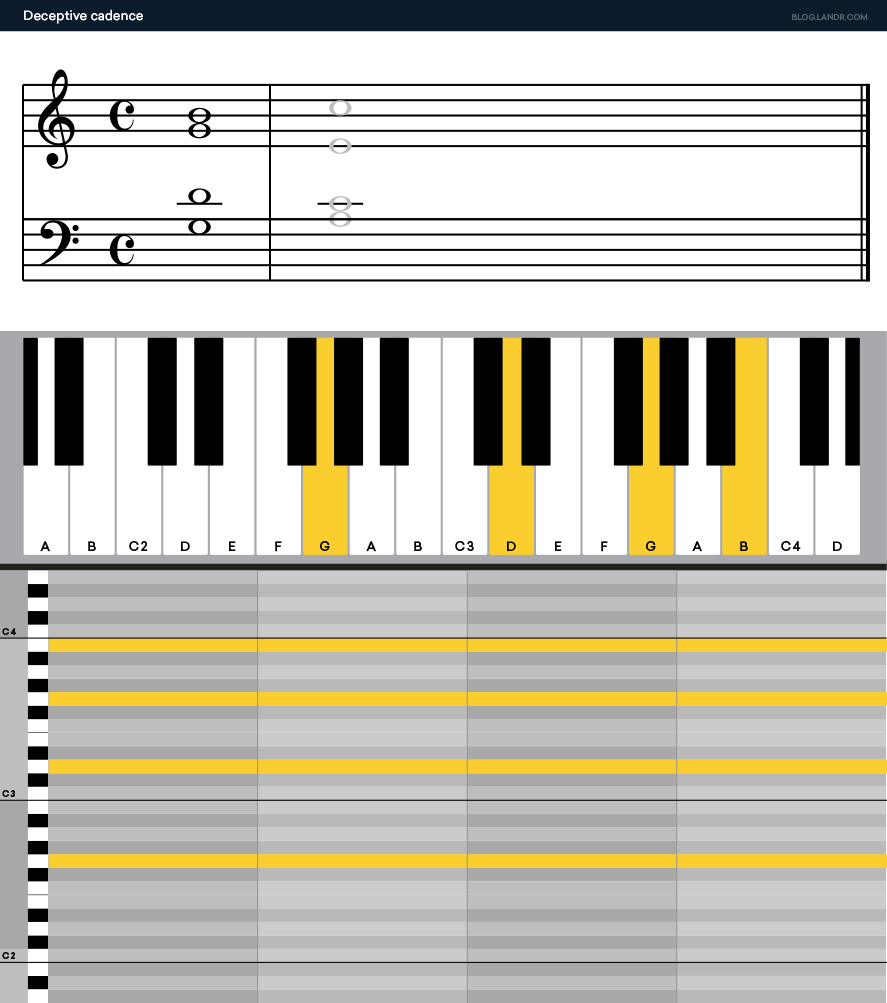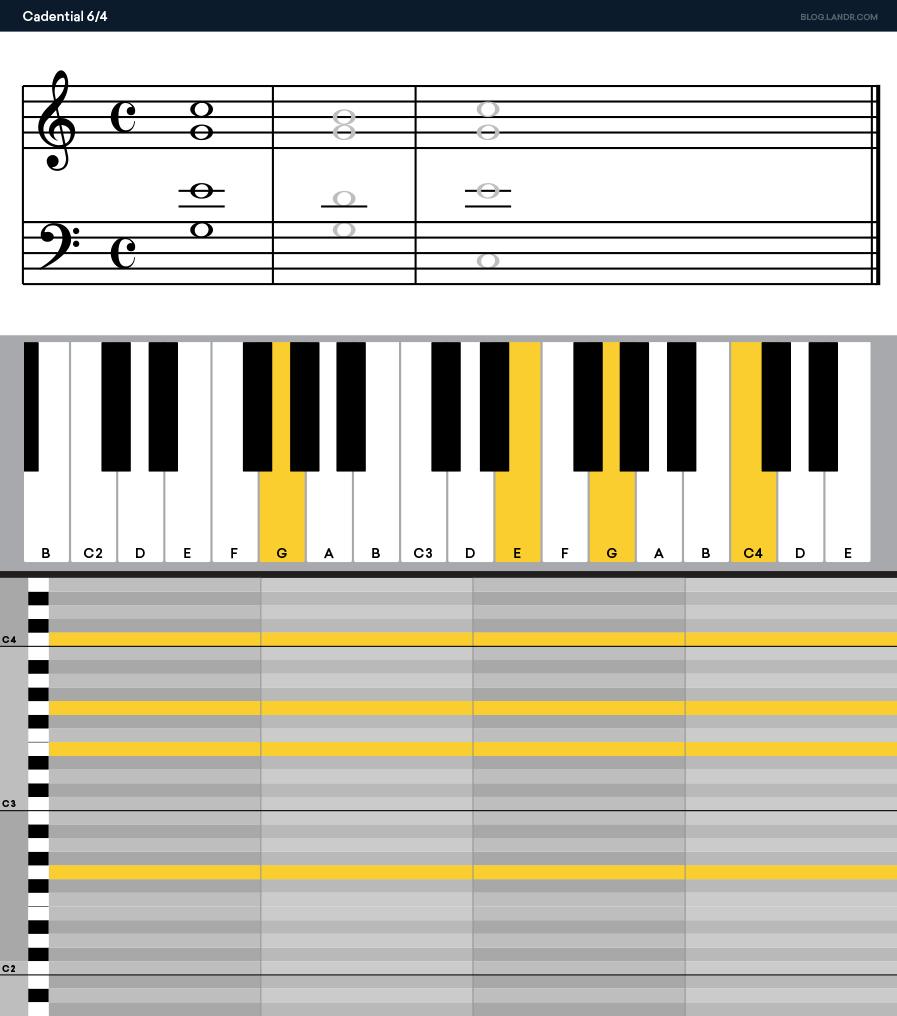Some of the most fundamental harmonic gestures in music are Cadences.
They bring a feeling of closure to musical phrases the same method a period ends a sentence.
However, understanding cadences are difficult when you have never seen them before.
In this article, I will go through the different kinds of cadences, how they work and how to use them in your music to help you get more fans.
What’s a cadence in music?
A musical cadence is a melodic or harmonic figure that provides a phrase the sense of resolution or closure. Cadences sometimes include harmonic action that confirms the important thing of a piece of music via the motion from dominant to tonic harmony. There are several different categories of musical cadence that feature differently and make variations on a harmonic resolution.
Cadences play an essential role in the structure of music. Generally, cadential figures are used to separate distinct musical phrases.
Traditional musical structures depend upon cadences to provide listeners cues with their form.
These conventions are not important components of music, however, there’s still a lot to learn about good songwriting when you understand cadences.
Types of cadences
There are a number of distinct varieties of cadences.
Each kind of cadence has a barely different effect to bring closure to a phrase.
Here are the main cadence types:
1. Authentic cadence
An authentic cadence is a movement from V – I at the end of a phrase.
An ideal authentic cadence (PAC) is an easy dominant-tonic cadence where both chords are voiced in the root position.
That is the strongest and most easy cadential figure that provides the most complete harmonic and melodic closure.
The V chord will often embody the seventh degree in an authentic cadence for even more pronounced resolution.
2. Plagal cadence
The plagal cadence is a cadential figure that depends on movement from IV to I. Plagal cadences date from the earliest forms of western music, however, they were popularized in 19th century arrangements of church hymns.
Their harmonic function is barely ambiguous, however, the plagal cadence is easily recognizable from the closing phrases of some traditional hymns and gospel songs.
3. Half cadence
A half cadence is a musical phrase that rests on dominant harmony instead of following via to the tonic.
Half-cadential figures are sometimes used to punctuate a pause between phrases within a bigger harmonic structure.
A half cadence could give the sensation of a harmonic “cliffhanger.”
There are half-cadences in this David Bowie song that builds tension over V7.
4. Deceptive cadence
The deceptive cadence changes your expectations for tonic-dominant motion.
They start out similar to their authentic counterparts, however, veer away from tonic harmony if you least expect it.
Following the dominant chord, the deceptive cadence can resolve several different harmonic areas.
The most common is VI, though almost any other chord could make the characteristic “deceptive” sensation.
When your harmonic intuition gets faked out at the end of a phrase you may be listening to a deceptive cadence! Listen to what occurs after the dominant chord in the chorus of this classic Beatles tune:
5. Cadential six-four
One last cadential that we need to know is the so-called cadential six-four. That is an authentic cadence with a twist.
The “six-four” refers to the figured bass symbols used to represent the inversion of the dominant chord.
It’s slightly misleading since the inverted chord, in this case, is actually the tonic chord in the second inversion.
But since that means the fifth degree of the scale is in the lowest voice, we hear this chord as a dominant harmony.
That feature becomes apparent once you hear this kind of cadence in action. The cadential six-four is a familiar sound that prolongs dominant harmony before the end of a phrase.
I can explain it further, however, it’s simpler to listen to the effect for yourself. The vocal hook of this classic love song is based on the power of the cadential six-four to prolong dominant harmony.
use cadences in your songwriting
These definitions seem technical, however, utilizing cadences in your songwriting is pretty simple.
The key is paying attention to where the dominant chords fall in your chord progressions.
Listen to the way your phrases unfold. Do they end by building tension over V? Congratulations, you have got a half cadence!
Do they confidently transfer from root V7 – I like a basic Beatles observe? It’s a genuine cadence!
As you get extra accustomed to the idea you can begin experimenting with the opposite varieties of cadences.
Ending a phrase with I-IV-I may give your tune a gospel taste. That’s a plagal cadence in motion.
And subverting your listeners’ expectations is one of the simplest ways to maintain them engaged. That’s the place misleading cadences are available!
Sense of closure
Cadences are an essential part of your harmonic vocabulary.
The sense of closure they supply is a vital device for developing musical phrases.
Use this text to get began with cadences and use them in your songwriting.






